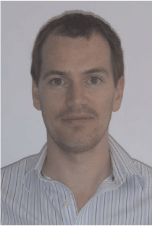Development of subsea tie-backs in challenging environments
Gregor Couper A , Sina Roshan-Zamir A , John Rickman A and Chris Lee BA Wood Group Kenny.
B Origin Energy.
The APPEA Journal 54(2) 540-540 https://doi.org/10.1071/AJ13113
Published: 2014
Abstract
Tie-backs to existing facilities are a long established method of expanding developments, as they often offer a cost-effective solution. For short length tie-backs located in regions that are remote and/or subject to severe weather conditions, however, the feasibility of installation can become a significant constraint. Factors such as high mobilisation cost of pipelay vessels and conditions that make pipeline towing impractical limit the potential design solutions. Defining these constraints early in the project is critical to successful execution. This extended abstract explores the challenges faced when developing such a tie-back by considering a case study of Origin Energy’s Geographe development, located in the Otway Basin. The location and harsh weather conditions constrained the viable installation options, which shaped the design. A flexible flowline was selected because it could be installed from a wider range of vessels and in a less limiting weather window. Subsea coolers are located at the wells for control of top of line (TOL) corrosion and to protect the flexible flowline from exposure to overly high temperatures. The cooler design brings its own challenges, requiring a two-stage process. First, modelling of the production fluid is used to determine the cooling requirements; then, CFD is used to design the cooler piping and structure to achieve this. A design with multiple, smaller structures was used to maximise the number of capable installation vessels. This extended abstract discusses the constraints that can occur, how the design must accommodate them, and the implications on execution of the project.

Gregor has worked in the oil and gas industry for the majority of the last 14 years. He has been involved in projects through all phases from Concept to Installation and into Operations Support. His specialist areas include pipeline and structural design, advanced numerical analysis, reliability analysis and arctic engineering. Gregor is currently a Lead Engineer/Project Manager with Wood Group Kenny in Melbourne, involved in the execution of projects locally and across South-East Asia. He has an MEng Mechanical Engineering, MScEng Mechanical/Materials, is a Chartered Engineering and member of IMarEST. |

Sina is a presently employed as a Senior Engineer in the Melbourne office of Wood Group Kenny, with three years’ experience in offshore and subsea projects. This experience ranges across early project phases (Concept Select) through to Project Execution and Installation campaigns, with offshore experience supervising installation and pre-commissioning activities as a client representative. Sina graduated with first class honours from RMIT University, with a double degree in Bachelor of Engineering (Aerospace)/Bachelor of Business (Management) in 2010. He is a member of the professional engineering bodies Engineers Australia, and the Society for Underwater Technology (SUT). |

John has over 30 years’ experience in the design and construction of offshore oil and gas facilities. He has been involved in all phases of offshore projects from feasibility studies through detailed design and offshore construction. He has specialised in the engineering and project management of offshore installation, subsea pipelines, subsea developments and subsea intervention projects. John is presently a Senior Technical Advisor on projects for Wood Group Kenny Melbourne. He has a Bachelor Degree in Civil Engineering. |

Chris has had a long career in the oil and gas industry with a background in instrumentation and control. In his early career six years were spent in the UK and Norwegian sectors of the North Sea on several large oil platform projects in the completions and commissioning teams. Following this offshore career, he embarked on 15 years of consultant engineering, completing many offshore design projects. Seven of these years were for ABB Lummus Global in the Netherlands including a one year secondment to Qatar in the Middle East. Chris Joined WorleyParsons on arrival in Australia in 1998, taking up the Chief Instrument Engineers position and latterly in a multi-discipline role as an Engineering Project Manager. During this 13-year period he gained valuable experience on many Subsea Projects executed in Victoria and interstate. Chris is presently the Lead Subsea Engineer (Systems) for Origin Energy’s Upstream Group in Melbourne and has recently successfully completed Origin’s first subsea development—the Geographe Project. He has an Honours Degree in Instrumentation & Control, is a Chartered Engineer and is on the Committee of the Melbourne branch of the SUT. |


